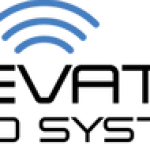Lifts and elevators are integral components of modern infrastructure, providing quick and convenient vertical transportation in residential and commercial buildings. However, with increasing safety concerns and incidents of vandalism or harassment, having reliable CCTV camera for lifts is a must to ensure protection for everyone. This article will explore the benefits of installing CCTV cameras in lifts, key features to consider, and how to choose the best solutions to keep passengers and properties secure.
Why Install CCTV Cameras in Lifts?
Installing CCTV cameras in lifts is not just about monitoring; it's a proactive step towards safety, accountability, and peace of mind. Here’s why it’s essential:
Enhanced Security and Monitoring
CCTV cameras in lifts provide real-time monitoring, ensuring that the area is always under watch. This helps deter crime and identify suspicious activities promptly.
Prevention of Vandalism
Vandals often target enclosed spaces like elevators. A visible camera system can discourage such behavior, reducing property damage and maintenance costs.
Protection Against Harassment
Elevators are enclosed spaces, and unfortunately, this can make them susceptible to incidents of harassment. CCTV cameras ensure that there is video evidence, promoting a safer environment for everyone.
Emergency Response and Evidence Collection
In case of emergencies or accidents, CCTV footage serves as crucial evidence. It helps security personnel respond swiftly and accurately, potentially saving lives and clarifying disputes.
Maintaining Public Confidence
Knowing that a lift is under surveillance instills confidence in its users. Tenants, visitors, and employees feel safer, enhancing the overall image of the building.
Key Features of Reliable CCTV Camera Solutions for Lifts
When selecting CCTV cameras for lifts, it's vital to choose models that cater specifically to the unique environment of an elevator. Consider these features:
Compact and Discreet Design
Space inside a lift is limited, so the camera should be compact. It should also blend seamlessly with the lift’s aesthetics, avoiding a bulky or intrusive appearance.
Vandal-Resistant Housing
Given the risk of vandalism, look for cameras with robust, tamper-proof housings that can withstand physical impact and attempts to disable them.
Wide-Angle Lens for Complete Coverage
Elevators are small, confined spaces, making a wide-angle lens essential. It ensures comprehensive coverage, capturing every corner of the lift.
High-Definition (HD) Video Quality
Clear, high-definition video is essential for identifying faces and activities. Look for at least 1080p resolution or higher for optimal clarity.
Low-Light or Infrared Capabilities
Some lifts may have poor lighting, so choose cameras equipped with low-light or infrared features to capture quality footage even in dim conditions.
Two-Way Audio Capability
This feature allows security personnel to communicate directly with individuals in the lift, providing instructions or responding to emergencies in real-time.
Remote Access and Monitoring
Opt for cameras that support remote viewing through smartphones or computers. This allows building managers and security staff to monitor the lift’s activity from anywhere.
Motion Detection and Alerts
Motion-activated cameras conserve storage space and bandwidth by recording only when movement is detected. Alerts can also be set up to notify security personnel immediately.
Top CCTV Camera Options for Lift Surveillance
Here are some top-rated CCTV camera models that are ideal for lift surveillance:
Hikvision DS-2CD2543G0-IS
- Features: 4MP resolution, vandal-proof, and compact design.
- Benefits: High-resolution image quality, built for confined spaces like elevators, and supports audio input.
Axis M3045-V Mini Dome Camera
- Features: Full HD 1080p, wide dynamic range (WDR), and vandal-resistant casing.
- Benefits: Crystal-clear images, durable design, and easy to install in small spaces.
Dahua IPC-HDBW5831R-ZE
- Features: 8MP resolution, motorized varifocal lens, and infrared capabilities.
- Benefits: Excellent clarity and nighttime performance, robust protection, and comprehensive coverage.
Sony SNC-VM600
- Features: 720p HD, vandal-proof, and IK10-rated housing.
- Benefits: Reliable performance, built to withstand tough environments, and affordable.
Best Practices for Installing CCTV Cameras in Lifts
To maximize the effectiveness of your CCTV system in lifts, follow these best practices:
Positioning the Camera Strategically
Place the camera in a location that captures all areas of the lift, typically at the top corner. Avoid placing it directly above the door, as this may limit visibility.
Use Vandal-Proof Mounts
Since elevators are prone to vandalism, secure the cameras using strong, vandal-proof mounts and enclosures.
Ensure Proper Wiring and Connectivity
Use durable cables and consider wireless options where wiring is challenging. Ensure the camera is connected to a stable power source and has backup options in case of a power outage.
Test Visibility Under Different Lighting Conditions
Test the camera’s performance during different times of the day. Adjust settings to ensure clear images, even in low-light conditions.
Regular Maintenance and Checks
Schedule regular maintenance to ensure cameras are functioning correctly. Clean the lenses, check for tampering, and update firmware as needed.
Conclusion
Installing reliable CCTV camera solutions for lifts is a vital step toward ensuring the safety and security of passengers. The right system not only deters crime and vandalism but also provides valuable evidence in the event of an incident. By choosing high-quality, compact, and vandal-resistant cameras with the right features, building managers can create a safer environment for everyone using the lifts.





Comments